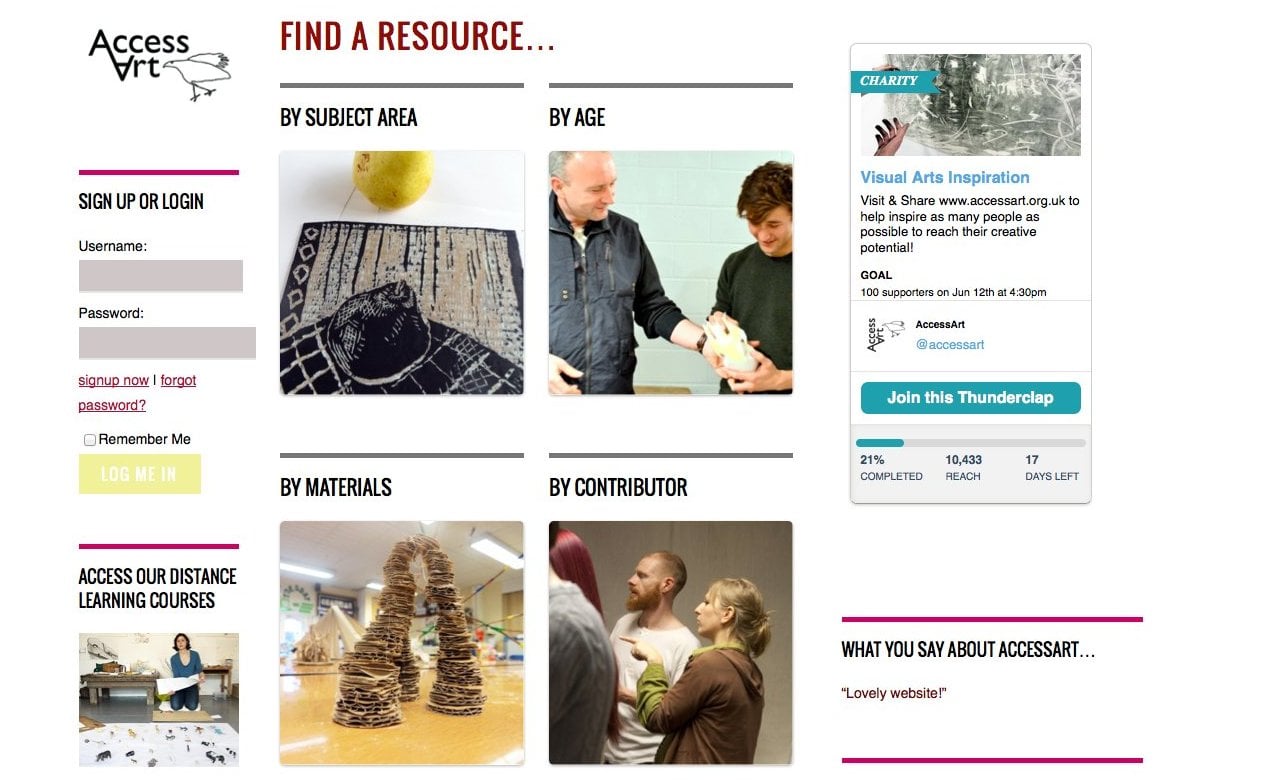
No more feast or famine
The AccessArt website has switched from being project-funded to self-sustaining thanks to its membership income. Paula Briggs tells the story.
AccessArt is a charity which aims to inspire and enable high-quality visual arts teaching, learning and practice. We achieve this primarily through collaboration with creative practitioners who share their practice via our website. Over the years we have built a loyal and diverse audience consisting of artists, facilitators, teachers and individual learners who visit our site to access our evolving collection of visual arts resources. All these resources are based upon artist-inspired or artist-led activities.
I established the charity with Sheila Ceccarelli, who I had studied with at Norwich School of Art and later the Royal College of Art London, and we continue to direct and manage the organisation today with the help of three trustees. From 1999 to 2011 we relied upon project funding from various bodies which helped us develop areas of expertise and build up our expanding collection of resources. For example, a NESTA project funded an exploration of teenage creativity, while an Esmée Fairbairn Foundation-funded project led to a collection of resources which help our audience explore and develop sketchbooks as a creative tool. We have never received core or revenue funding, so project funding was vital to us, and for many years we grew or shrank as an organisation to accommodate each project.
We tried to create a balance between content which was free to access and content which was behind the membership wall
In 2011, when the economic climate tightened and it became clear that arts organisations were in for a tough time, we stopped applying for grants and took the opportunity to revisit how the charity operated. We were clear we wanted to thrive and were certain that we had carved for ourselves a unique offering and we knew our audience liked what we did. But at the same time, we felt we could no longer ride the feast or famine of project funding, especially if getting that funding was about to become even harder.
We looked to our assets: first, an evolving and well-received collection of online resources, and second, our loyal audience. We took the brave decision to become a membership organisation. We deliberately set our membership fees very low. It was teachers within schools who valued our work, so we were clear that our membership should primarily be aimed at individuals and not organisations. And we realised that everyone was feeling the financial pinch, not just us. Our membership was set at (and still is today) £3.50 per month, with the first 30 days free, or £42 per year. Members are entitled to full access to all the resources on the website, plus a discount on art supplied from partner suppliers such as Pisces and TTS. We tried to create a balance between content which was free to access and content which was behind the membership wall. We are after all a charity whose name has access in it so we did not want to suddenly be seen as being inaccessible for some.
Our membership site was launched in September 2011. We sold membership as an opportunity for our users, rather than as a necessity for the organisation. We held our breath. That year Sheila and I had made loans to the organisation of £800 to pay for insurance, hosting costs, etc. By year end March 2013 AccessArt had raised over £36,000 in membership fees. Our ratio of members to free subscribers is 1:10, or 10%, which we are very proud of, as most pay-to-view sites aim for a ratio of between 2 and 4%.
Our membership continues to grow and now provides us with a reliable income which means we can plan for further growth in a holistic way. Our key messages are the following:
- Be confident in your assets and sure of your worth.
- Timing is key.
- Treat every individual relationship with audience or artist as that − an individual relationship. And then invest in each relationship.
Paula Briggs is Co-founder and Director of AccessArt.
www.accessart.org.uk
[email protected]
Join the Discussion
You must be logged in to post a comment.